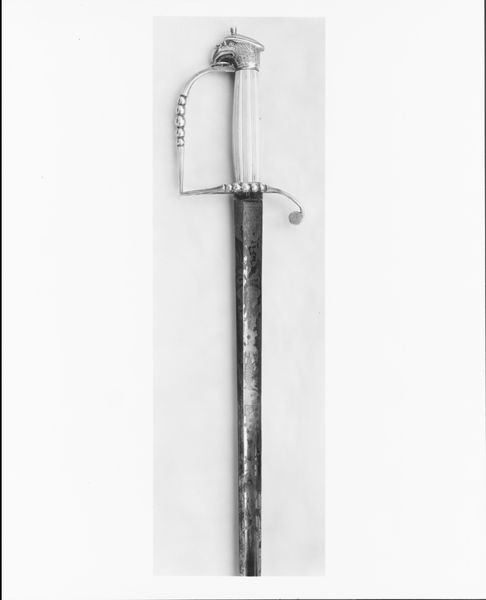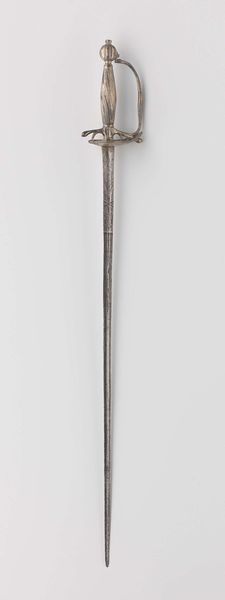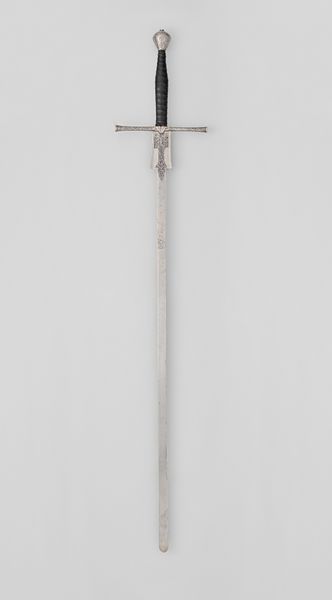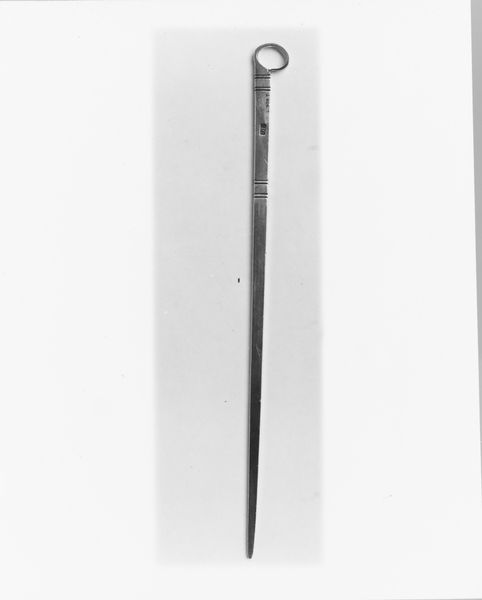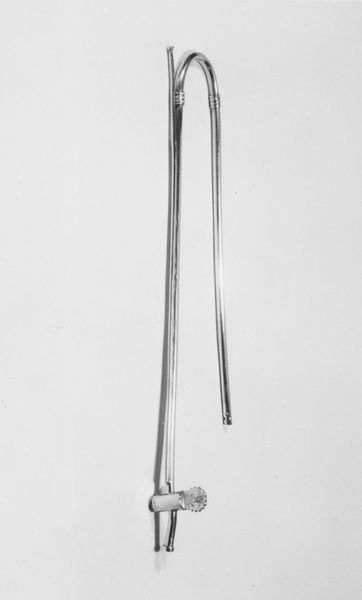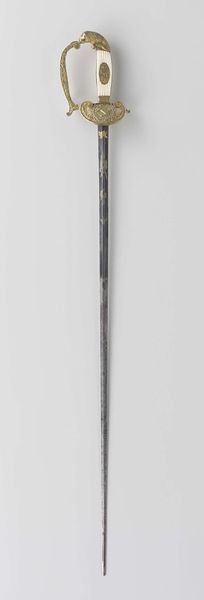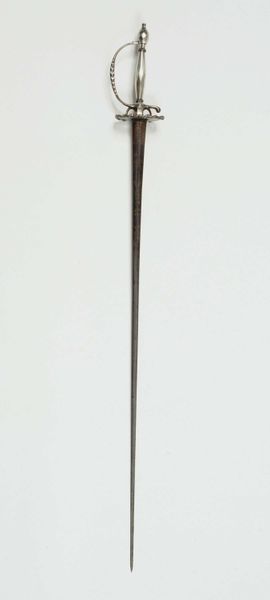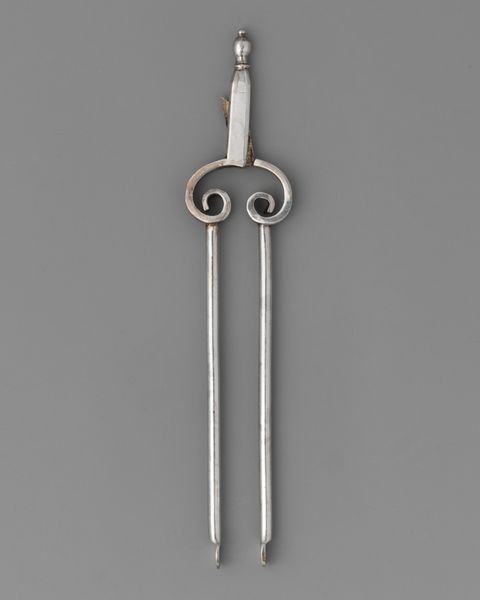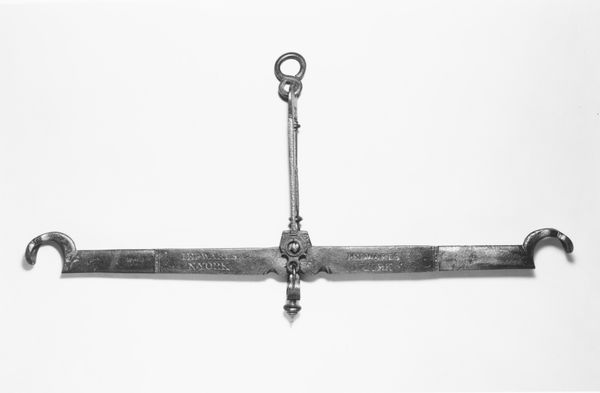
carving, metal, sculpture
#
carving
#
baroque
#
metal
#
sculpture
#
form
#
sculpture
#
carved
#
line
Dimensions: L. 25 1/8 in. (63.8 cm)
Copyright: Public Domain
Curator: I’m drawn to the visual language present in this metal-carved sword—its long slender blade reflects a dark aesthetic and it suggests power. What do you think? Editor: Indeed, it certainly has a stark quality. This "Sword," which we believe dates from 1725 to 1750, epitomizes Baroque aesthetics through its sculpted design, intricate carving, and functional intent. It’s currently housed at the Metropolitan Museum of Art in New York. Curator: When viewing objects such as this we also need to consider gender studies—specifically, who was typically permitted to own a sword, and what does it communicate about the owner’s societal identity at that point in time? Swords have so often served as gendered status symbols for masculine aggression. Editor: Absolutely. Moreover, the making of this piece needs exploration. Look at the different processes of working metal and the high-skilled labor that required. Consider that the artist's vision translated into tangible form through meticulously carving steel— Curator: A form itself inseparable from European colonialism, military might, patriarchy, and cultural hierarchies, right? Editor: The very fact that the handle is made from one material, and the blade from another impacts function; this materially represents social practices of ownership, status, and hierarchy. It could possibly point us to how these kinds of class stratifications operate as well. The design is more than mere ornament; the blade itself probably functioned as something decorative but capable of inflicting death at any time. Curator: And this intersection becomes further emphasized once we study the identities for whom these objects became so important throughout history. It's about who yields power through material things and what they are willing to fight for to protect their assets. Editor: Right. The value is in its production, reflecting what the patron was likely able to afford, revealing layers within production lines; this is one small lens for understanding bigger questions around social class and economic standing at this time. I find it striking that we can study the artistry and social symbolism, and the production aspects of this single item, all at the same time.
Comments
No comments
Be the first to comment and join the conversation on the ultimate creative platform.
